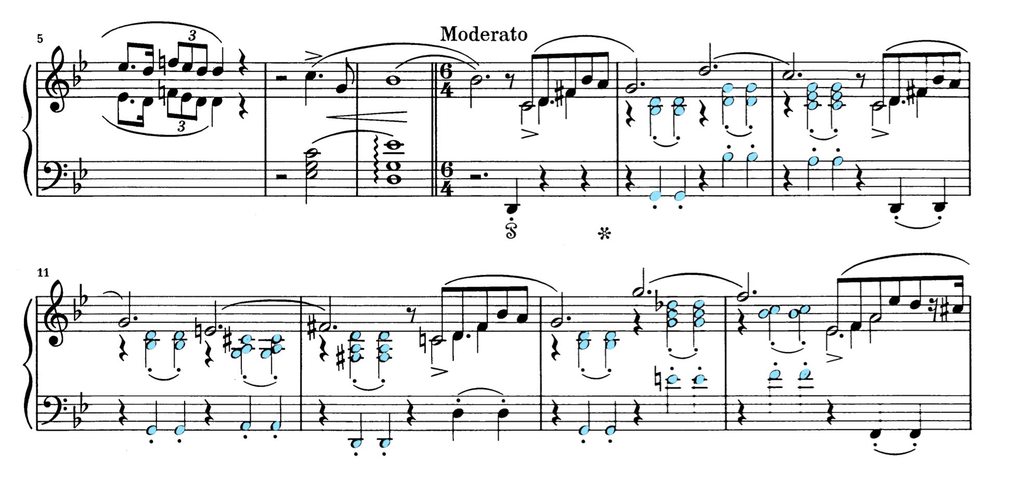pianoloverus I started a thread about this surgical pedaling with the left pedal on piano world and it may be interesting to hear what pianists there say about it.
Here's something I wrote over there:
Something that Chiu omits to mention is that each time he lifts the shift pedal, all the notes of the piano are affected: when the hammers move to the left to give the melody note a brighter sound, the bass note will also have a brighter sound. We don't hear this on the recording because he is (despite what he says) playing the melody louder than the accompaniment.
He actually plays the bass notes on the beat so softly that they are often hardly audible, and Chopin's elegant arpeggio figuration turns into a vague mush.
You can't get away from this: if you are "surgically" pedalling the melody, any accompanying notes that fall at the same time as one of the melody notes will not be played "una corda". twocats' example of Chopin's 1st Ballade looks more hopeful, since most of the melody notes are played alone, with the accompanying chords coming afterwards. But there are always places where the accompaniment comes with the melody:

All the notes I have coloured in light blue can be played with "una corda", but at the ends of bars 10, 12 and 14 you're stuck with "tre corda".
So what do you do? Accept that these notes are the "wrong" colour? Carefully play them softer than the rest of the bass notes so they don't disturb the line? But in that case, why not just play all the accompanying chords softer and dispense with the surgical pedalling?
Here's the thing: on any reasonably well-regulated piano, when you play louder the sound doesn't just get louder, it gets brighter. And when you play softer, it doesn't just get softer, it gets mellower. This allows pianists to create an extraordinary variety of colour, by varying the force of the touch from one note to the next, from one chord to the next, between the hands or even between the fingers of one hand. The effects we can achieve with these means go way further than what we can do with the "surgical" use of the shift pedal.
I'm convinced that Chiu was so concentrated on this special pedal technique that he neglected many important aspects of this piece. He has pretty much turned the arpeggio figures in both hands into an "accompaniment soup", instead of the shimmering, complex tissue of counter melodies and counter rhythms it should be. The melody stands out, not as a singing line, but like a series of bells, disconnected from the arpeggios, instead of being woven into the texture.
I much prefer something like this: